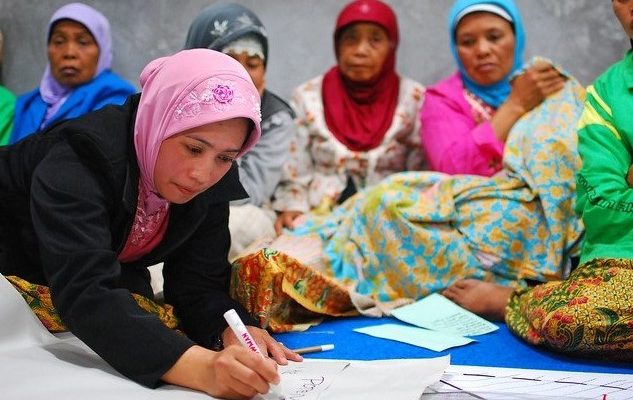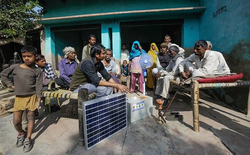BLOG: Indian Infrastructure Must Be Climate-Proofed to the Core

Investing in infrastructure to meet the population’s development needs remains a top priority for the government of India. Increasingly, as the impacts of climate change begin to bite, government-sanctioned projects expressly identify climate change as a risk to development. However, this welcome attention to climate issues is yet to be translated into infrastructure project designs that account for the magnitude of future climate change. A big shift is needed to truly integrate climate compatibility into infrastructure planning and delivery.
Gradual swing to climate-compatible development policies
Fifty years ago, the primary focus of the Indian government was on rural development. Today, however, the greater focus is on urban areas, where a majority of people now reside.
National government schemes like the Jawaharlal Nehru National Urban Renewal Mission (JNNURM), and more recently the Atal Mission on Rejuvenation and Urban Transformation (AMRUT), have been putting in financial resources for urban infrastructure development. The JNNURM scheme, one of the first flagship schemes of the national ministry on urban development, envisaged an investment of about US$ 20 billion on urban infrastructure development over a period of seven years, with primary focus on provision of housing and basic urban services, particularly to the urban poor. The AMRUT scheme envisages an investment to the tune of about US$ 7 billion for five years, focusing largely on water supply, sewerage, transport, green spaces among others. None of these schemes however lay any explicit stress on making the newly developed infrastructure climate resilient.
Over time, increasing awareness of climate change has led local and national governments to include facets of climate mitigation and adaptation in development projects and schemes.
The National Action Plan on Climate Change (NAPCC) for India, released in 2008, has encouraged a stress on infrastructure development that is climate-friendly, including but not limited to a big push to the use of renewable energy, development of sustainable habitats, promotion of sustainable agriculture, as well as conservation and efficient use of natural resources. Furthermore, increasing numbers of local governments are developing climate action plans, incorporating mitigation and adaptation measures in their annual plans and budgets. Amaravati, the newest capital city for the state of Andhra Pradesh, is being planned as the most sustainable city in the world, incorporating climate resilient infrastructure development.
Incorporating climate actions through the annual budgets and plans of urban local bodies is definitely helping to mainstream climate resilient development. ICLEI South Asia has helped more than 15 cities in India to develop their climate resilient action plans, and it has been expressly pointed out in these action plans how they can be implemented through existing or upcoming municipal projects and schemes.
Need to develop climate resilient projects
However, there is a problem with the way in which climate responsiveness is being incorporated into projects and programmes. Typically, largely because of the NAPCC, it is necessary for local governments to include aspects of climate mitigation or climate adaptation into their development projects. This ensures national government funds flow into the cities. However, it is often noticed that this incorporation is cursory, and often limited only to paper.
The focus of city development and town planning has remained on infrastructure development for better service delivery, and addressing climate concerns are secondary or additional benefits. Improved service delivery is of course needed (indeed, often essential considering the present and growing demands faced by cities), but it does not necessarily take into consideration future climate concerns.
It has also been observed that once an infrastructure development project has been designed, it is extremely difficult to incorporate the climate angle to it at a later stage, mainly for bureaucratic reasons. Only very marginal changes are accepted and carried out. It is to be considered, therefore, if this type of ‘climate mainstreaming’ is actually limiting city engineers and planners from developing full scale climate resilient or climate adaptive infrastructure.
In fact, in spite of developing climate action plans, the projects—in both their type and their location—are still based on political priorities, often ignoring climate concerns or even risks. Large water treatment plants are still preferred by majority of cities, while mostly ignoring demand side management of water resources. More and more sewage treatment plants are being built, even when households are not connecting to the lines and older plants are working below capacity.
Natural wetlands that provide water cleansing services, are completely ignored and are choking up with solid waste in many cities. This kind of infrastructure development neither leads to good services, nor helps in adapting to future climate challenges.
At present, hardly any city has projects that are solely looking at improving climate resilience in infrastructure. The Heat Action Plan developed by Ahmedabad Municipal Corporation, the early warning system for floods developed by Surat Municipal Corporation, or using rain water harvesting for recharge of borewells in Solapur are exceptions rather than the rule. Solapur city has developed an Integrated Urban Water Management Plan and intends to use AMRUT funds to recharge 200 borewells all over the city with rain water, following a small pilot conducted by ICLEI South Asia in one of its slums that has yielded very positive results even three years after the project is over.
In summary, infrastructure development projects need to be built around climate concerns to address climate risks, not just incorporate climate aspects. City specific assessment of potential climate impacts is needed for them to develop climate resilient infrastructure. Such holistic planning will enable cities to design infrastructure that takes into consideration future climate risks and become truly resilient.




